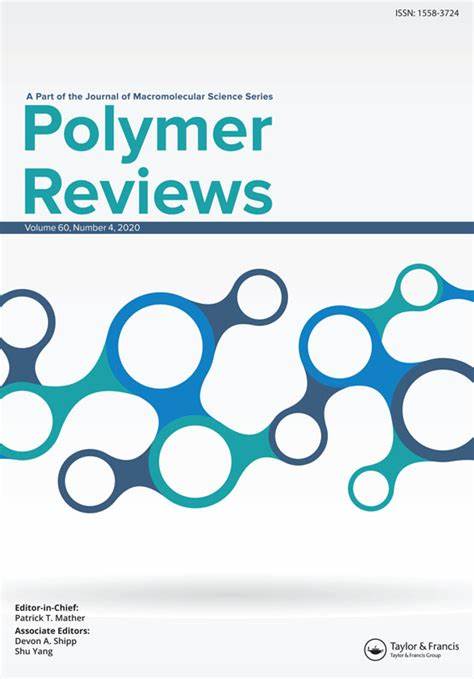Approaches Toward In Situ Reinforcement of Organic Rubbers: Strategy and Recent Progress
IF 11.9
2区 化学
Q1 POLYMER SCIENCE
引用次数: 5
Abstract
Abstract Organic rubbers, comprising carbon–carbon links in their polymer backbone, are an essential part of modern everyday life. Tough, their unique properties are mainly governed by reinforcing fillers such as carbon black and silica. However, the reinforcing power is not only driven by the chemical nature of fillers but also by their particle size, shape, distribution and dispersion. In order to minimize agglomeration and processing difficulties, the idea of in situ generated fillers has been approached. In situ means “locally” and refers to the generation of fillers during the vulcanization process. This versatile technique provides individual tailoring of rubber compounds due to numerous possible reaction pathways. In situ reinforcement has been reported for all relevant rubber matrixes and is already employed commercially. In this review, a comprehensive overview of possible in situ reinforcing strategies for organic rubbers and their impact on mechanical properties is provided. It covers the reinforcing power of sol–gel derived in situ fillers, metal salts of unsaturated carboxylic acids as well as the formation of interpenetrating networks with resins in detail. Graphical Abstract有机橡胶原位增强的方法:策略与最新进展
有机橡胶是现代日常生活中必不可少的组成部分,其聚合物骨架中含有碳-碳链。坚韧,其独特的性能主要是由增强填料,如炭黑和二氧化硅。然而,补强力不仅取决于填料的化学性质,还与填料的粒度、形状、分布和分散性有关。为了最大限度地减少团聚和加工困难,探讨了原位生成填料的想法。就地的意思是“局部”,是指在硫化过程中填料的生成。由于多种可能的反应途径,这种多功能技术提供了橡胶化合物的个性化定制。据报道,所有有关的橡胶基体都有就地增强,并已在商业上使用。在这篇综述中,全面概述了可能的原位增强策略有机橡胶及其对机械性能的影响。它涵盖了溶胶-凝胶衍生的原位填料的增强力,不饱和羧酸的金属盐以及与树脂形成互穿网络的细节。图形抽象
本文章由计算机程序翻译,如有差异,请以英文原文为准。
求助全文
约1分钟内获得全文
求助全文
来源期刊

Polymer Reviews
工程技术-高分子科学
CiteScore
24.80
自引率
0.80%
发文量
21
审稿时长
6 months
期刊介绍:
Polymer Reviews is a reputable publication that focuses on timely issues within the field of macromolecular science and engineering. The journal features high-quality reviews that have been specifically curated by experts in the field. Topics of particular importance include biomedical applications, organic electronics and photonics, nanostructures, micro- and nano-fabrication, biological molecules (such as DNA, proteins, and carbohydrates), polymers for renewable energy and environmental applications, and interdisciplinary intersections involving polymers.
The articles in Polymer Reviews fall into two main categories. Some articles offer comprehensive and expansive overviews of a particular subject, while others zero in on the author's own research and situate it within the broader scientific landscape. In both types of articles, the aim is to provide readers with valuable insights and advancements in the field of macromolecular science and engineering.
 求助内容:
求助内容: 应助结果提醒方式:
应助结果提醒方式:


